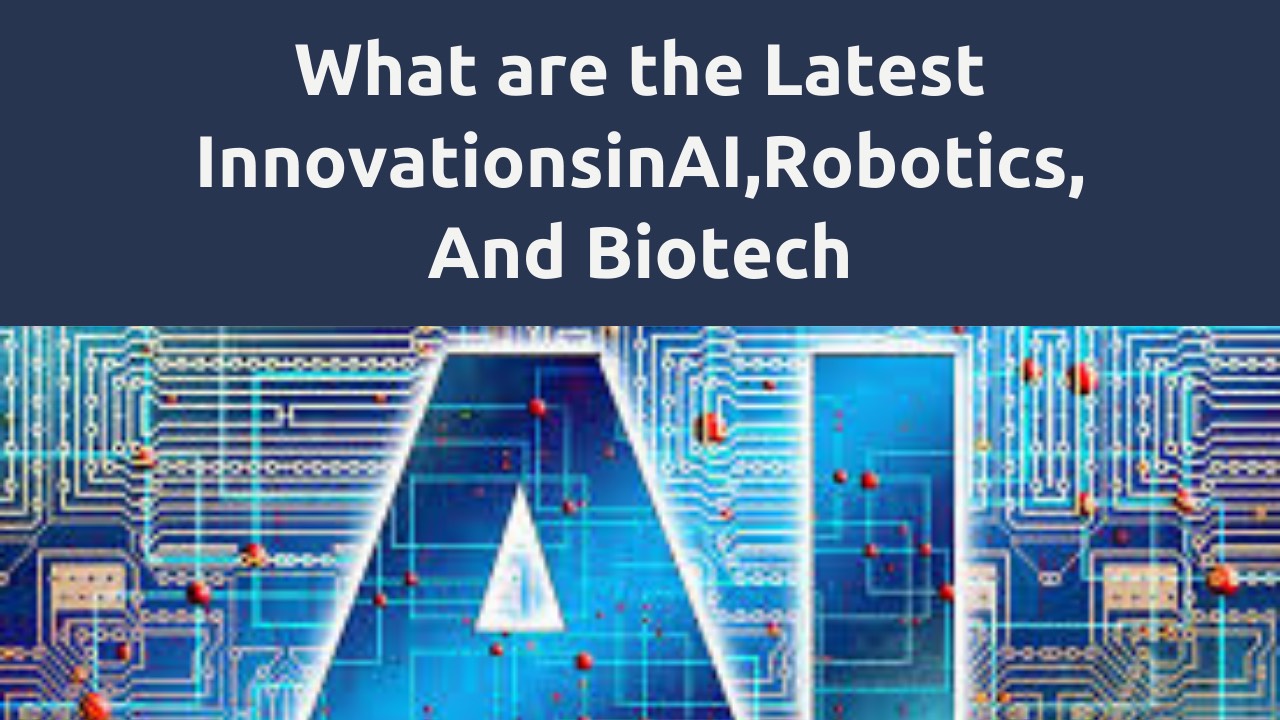Introduction
Exciting new technologies are rapidly changing how we live and work. Fields like artificial intelligence (AI), robotics, and biotechnology are seeing amazing progress as new tools and breakthroughs arrive constantly. This piece of content will explore some of the latest innovations that are shaping the future across these leading-edge sectors.
Natural Language Processing
Natural language processing (NLP) enables AI systems to understand, interpret, and generate human languages. Virtual assistants like Siri, Alexa, and Google Assistant use NLP to have conversations with people based on contextual meaning. The latest NLP models can summarize long articles with remarkable accuracy. Some can even write creative fiction stories, poems, and scripts based on limited prompts. As NLP continues to advance, AI will be able to chat more naturally with people and gain general knowledge through learning.
Robot Dexterity
Advanced robotics requires extremely precise motor capabilities and grip to safely handle various objects similar to human movements. New sensory skin coverings give robots refined tactile sensation to feel shapes, textures, and lightweight forces in their hand grippers and fingers. This helps them gently adjust their grasp on different items like tools and ingredients for specific tasks. Special rubberized robot fingers can move independently just like ours while advanced sensors provide critical pressure feedback.
Autonomous Vehicles
Self-driving vehicles utilize cameras, radar, lidar, and sensor fusion to steer themselves without human operation. Today’s autonomous test vehicles can navigate many more real-world situations beyond just sunny weather and mapped geo-fenced suburbs. Recent demos show detectable traction control on snowy slopes, busy crossing guard-managed intersections, and lane changes for passing obstructed vehicles. As machine learning algorithms log more diverse test miles, AI driver “brains” keep improving at making safe real-time decisions in chaotic conditions.
Lab-Grown Meat
The immense land, water, and feed requirements of industrial animal agriculture spark interest in alternate food production methods. Enter clean meat cultivated from cell cultures into the mainstream conversation. By painlessly biopsying animal tissue samples, stem cells can multiply into all the required meat varieties in sterile bioreactor tanks without slaughter. Lab-based meat production promises to replicate the taste, nutrition, look, and cooking qualities of popular beef, chicken, pork, and seafood products with eventual cost parity to hold broad consumer appeal.
Agriculture Drones
Precision agriculture relies on continually monitoring crop growth and field conditions to maximize yields. Fleets of autonomous unmanned aerial vehicles (UAVs) equipped with multispectral cameras and sensors now survey acres of farmland to spot signs of disease, nutrient deficiencies, drought stress, yield estimates and prescribe treatments. Onboard computers analyze imagery even through clouded skies that helicopters cannot fly which allows 24/7 operation across vast fields. By catching issues early, drone insights bolster productivity for farmers through data-driven inputs versus generalized application methods vulnerable to inefficiency.
Exoskeletons
In physically intensive fields like manufacturing, construction, and warehousing, worker injury risks and fatigue stem from repeated heavy lifting, awkward postures, and long periods on foot. Emerging robotic exoskeleton solutions essentially serve as wearable braces with supporting frameworks transferring load stress off the body. Sensors detect how users move while providing augmented mobility and strength for reduced exertion. Lighter, flexible suit designs provide freedom of movement at workstations. Some emerging exoskeletons even utilize computer vision to automatically adapt assistance levels by visually recognizing workplace settings and activities in real-time.
Brain-Computer Interfaces
Brain-computer interface (BCI) technology enables minds to control external devices directly using brain signals. Non-invasive headsets detect electrical activity from thoughts which computer algorithms translate into commands. Motor-impaired patients already leverage implants to type messages, operate wheelchairs, or control robotic limbs with just the power of thinking. Consumer-grade BCI headsets also allow wearers to manipulate objects in augmented reality environments. As neural networking algorithms grow more proficient at decoding cognitive patterns, practical uses will extend towards improving memory, focus, skills training, and more by interfacing directly with our brains.
Cancer Finding Algorithms
Early detection vastly improves cancer survival rates yet overdiagnosis poses patient risks and healthcare costs given testing limitations. Emerging AI solutions help clinicians analyze medical scans like mammograms, MRI, and CT visuals at scale to uncover malignancies otherwise missed by human eyes. By processing thousands of images against verified cases, deep learning algorithms recognize hard-to-spot patterns linked to various cancer types at extremely high accuracy while reducing false positives. Reliable AI diagnostic assistance shows potential to become a routinely-used second set of expert eyes enhancing clinical workflows.
Quantum Computing
Conventional computers eventually face physical barriers around complexity, speed, and energy efficiency in handling advanced computations. Quantum computing leverages quantum physics properties like superposition for new types of lightning-fast processing unbound by traditional limitations. By encoding problems across interconnected qubit building blocks, quantum systems test multitudes of solutions in parallel to deliver complex outputs that would stall normal servers. Currently, nascent, practical quantum use cases focus on processing hardcore data analytics, molecular simulations, and cryptography. As quantum platforms mature overlooking noise errors, this new class of hyper-advanced computing hints at a coming revolution touching everything from medicine discoveries and climate science to space exploration and beyond.










